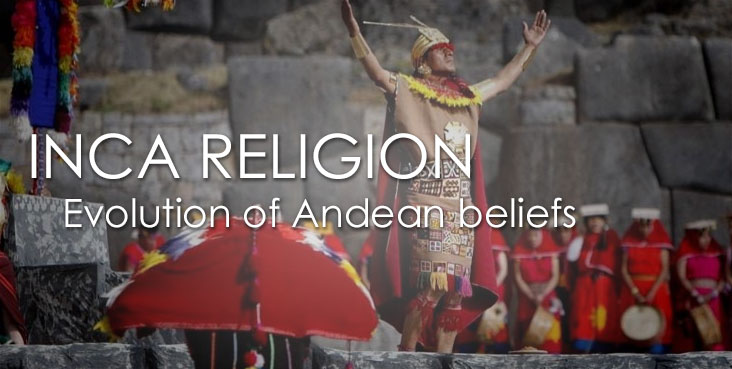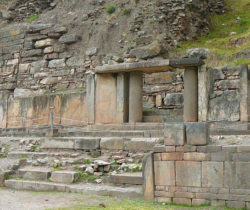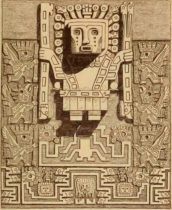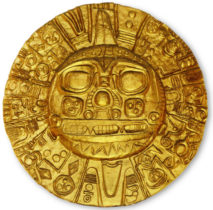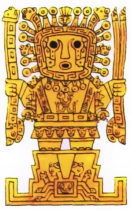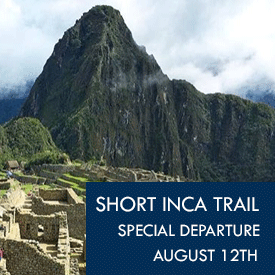The geographical region which today is called Peru, has a long and rich history, studied by many top researchers from the best institutions in the world, and still holds many mysterie.s. Religion and spirituality date back at least to 2.700 b. C. according to recent studies at the Caral citadel, some 200 km. north of Lima city. On this article, we will discuss the complex process whose outcome was Inca religion, which in turn is key to better understand its architecture, economy, actually, to better understand their entire worldview.
Even though Ancient, pre-Hispanic Peru didn’t have writing, knowledge in all areas of culture was preserved and passed on through the societies that successively ruled this region; the Inca empire and specifically Inca religion were the final beneficiaries of a cultural development dating back to some 4.000 years, since scholars point that the Incas began their rise around 1.300 a. D.
Prior Development of Andean Religion and Worldview
The first milestone in Andean religion was a society called Chavín de Huántar, which was active around 1.000 b.C., located at today’s northwest Ancash region; they developed a theocratic government after a number of warriors decided to take over religious activities. Historical findings show that the priests controlled all society, and actually they expanded to become the first Andean empire; their religion was based on terrible, frightening deities who commanded obedience and labor from the common population.
Chavín de Huántar has left as main archaeological evidence the famous Castle of Chavin, which is a large temple with tunnels and was the center of power, the Lanzón Chavín (Chavin Spear) which is a sculpture showing a priest in a trance and the Estela Raimondi (Raimondi Stone) which shows the Andean supreme God, Wiracocha (the Staffs God) as a scary being who is all-powerful.
After the fall of Chavín de Huantar, the empire morphed into a series of local kingdoms, which nonetheless kept the cultural developments, and especially religion. These local kingdoms were Paracas, Mochica and Nazca, each one with its amazing archaeological and historical attractions.
After Nazca, in the Titicaca Lake and Puno region, and beyond to the La Paz area in Bolivia, a new civilization emerged, which also had the influx of Chavin de Huantar’s religion: Tiahuanaco. It was a theocracy, whose main god was also Wiracocha, however, they launched a major Reformation on the previous spirituality, because Wiracocha was no longer a kind of demonic deity, but a benign one; archaeologist Dorothy Menzel has posited that Tiahuanaco’s religious leaders went on pilgrimage to the late Nazca kingdom (on today’s Ayacucho region in Peru), which was a warrior one, and met their rulers. Menzel’s hypothesis is that a major pact was made there: the Nazca will begin a war of expansion throughout the land while the Tiahuanaco will enforce the cult of the new Wiracocha to all the population. And so they did, thus at the end of the war, the second Andean kingdom was ready, which was the Wari empire.
The Wari empire lasted from around 500 to 1.100 a.D.; they reached far north Peru and today’s Bolivia and Chile. They had many cultural breakthroughs which were later used by the Incas: the making of a network of paved roads across the empire -which later became the Inca Trail or Capac Nan-, extensive construction of urban centers (Pikillacta being the most important in the Cusco area), and a planned economy based on agriculture which aimed at keeping social unrest at its lowest, moreover, almost if not all scholars point out that poverty disappeared with the Wari rise. The new cult of Wiracocha (the Staffs God) ruled over all the empire, which produced a wealthy royalty, peace and social stability. But around 1.100 a.D. serious agricultural decline led to the abandonment of the urban centers and the disintegration of the empire: the Andes were once again a series of regional kingdoms. One of them, located in the Cusco valley, will become the Inca empire.
Rise and Development of Inca Religion and Worship
Around 1.438 a.C., after a victorious war against the worst enemy, the ferocious Chankas, a Cusco valley prince called Pachacutec became Inca (King) and started the expansion of his kingdom from the small valley; a hundred years later, the Inca empire extended from Colombia to Chile and Argentina.
Pachacutec also launched a general plan to organize the growing kingdom, covering all areas of public affairs, and Inca religion took a very important role.
He changed the beliefs inherited from the Wari empire and actually reformed the entire cult and the clergy members; Wiracocha was still the supreme god, but its worship was reduced only to the elite, since Pachacutec created a new religion for the people, which was polytheistic, the main god being Inti (the Sun). The widely accepted theory is that Pachacutec took the cult of Wiracocha to within the elite because it was a god that wasn’t consistent with the strict social division of Inca society, which stated that the royals were of the highest divine ancestry whereas common people had an origin from lower gods. It is said that priests who insisted on the old Wiracocha religion were ousted from the temples.
So Inca religion became divided between that of the elite and that of the common people; let’s make a brief description of them:
- Religion of the Elite: the main god was Wiracocha, foundation of the universe and bringer of civilization, invisible, abstract deity. It is said that the Inca rulers also engaged on mystical ceremonies with the use of psychedelic plants which they considered sacred, which helped their spiritual evolution and the decision-making process about government affairs. Actually, evidence strongly suggests that Machu Picchu was both a sanctuary for such mystical ceremonies and a luxury retreat for royalty. All historians agree that the Inca empire was one of wealth, prosperity and social peace, where poverty and political turmoil were not found. The hidden problem surfaced with the Spanish invasion, when many local rulers who had been “invited” by the Incas to join the empire as second-class royals supported the Spanish conquerors under the wrong belief that they will end the Inca system and accept just a regional kingdom as well. Some researchers have also posited that at the time of the Spanish invasion, the mystical Inca religion was in decline, and actually there was a civil war going on between two sons of the deceased Inca emperor Huayna Capac, Huascar and Atahualpa.
- Popular Religion: it was polytheistic, the main god being the Sun, and also the Pachamama or Mother Earth was a very important goddess, since Inca people saw her as the provider of daily survival via agriculture, rain, water, fauna and flora and so on; the Incas had many rituals which were based on the worship of nature, such as the stars and mountains. This religion is still alive nowadays within groups that have preserved the Inca worldview. With the arrival of the Spanish conquerors, Inca religion was banned and a massive process of evangelization began, this is why we can see in Cusco city that Catholic churches and convents were built upon old Inca temples.
The main religious sites of the Inca empire within the Cusco region are Machu Picchu, the Koricancha Temple and the Sacsayhuaman sanctuary in Cusco city, and also there are wonderful places of worship in Pisac, Ollantaytambo and Chachabamba, among others.
We hope this article on Inca religion could be valuable for your entire Peru travel experience!
